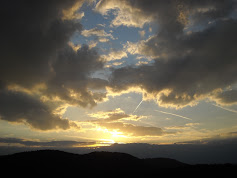As noted previously on the blog, there is a growing interest in these living artifacts. While little is known about them, the sheer number of thong trees similarly altered testify that these might have once been important landmarks throughout the continent marking trails or pointing directions to significant locations such as water-sources, food-gathering areas, and sacred locations. It is also known that Native-Americans created messages by embedding herb mixtures, stones, and other substances into the surface of these trees. Because there is so little known about these trees, efforts are being made by some to document the trees themselves along with their locations in order to build a database to aid in their study.
The trail tree phenomenon is not without controversy. Some skeptics balk at the idea that a tree with a 6-8 inch diameter trunk could be old enough to have been created by Native-Americans. There are a variety of reasons, however, that some of these trees would not seem to be large enough to account for their great age including: the alteration of its growth pattern due to the trauma inflicted from a person manipulating it; fires; drought; soil quality. There are enough larger trees, though, similarly altered as the smaller ones, which can easily be hundreds of years old. This site along Jumbo Road offers clear evidence that at least some of these trees could not have been formed by nature
Over the past couple of months, we've been able to get some shots of newly located trees as well as some we've seen but had yet to photograph. The top photo is of a very large White Oak located only 50 yards away from Hobo's Den near Calico Rock. The tree in the bottom photo on the right is located at Gorby near the site of the old Olive Branch School (another tree is located nearby but will not upload for some reason).
The remaining three trees are all near or along Jumbo Road and support a theory we have that many of these trees marked the old Indian foot-trails through the Ozarks. One tree, the top photo on the right, stands along a fenceline in a field directly across the highway from where Jumbo Road meets Arkansas 9 (Sylamore Road) just southwest of Melbourne. These trees along Jumbo Road, Lunenburg Road, and Rose Trail truly seem to be markers which guided early-American Natives and later settlers through the hills. Over the years, the foot-trails became wagon-trails and eventually the roads they continue to mark today.
The EIC Crew has also formed an hypothesis concerning these trees due to the writings of one of the White River Valley's early promoters of higher education, M. Shelby Kennard of Batesville, who wrote the following during a visit to Mount Olive in 1857:
"Some improvements have been made upon the courthouse which is a very good one, and altogether there is abundant evidence that public spirit is somewhat aroused in Izard, but that she is in much better condition than is generally supposed. The roads, especially as far as I have seen them, are very much improved and in this respect, Izard has set our county a good example.
"Good roads constitute one of the greatest luxuries of civilization, and making all proper allowances for broken country, rocks, etc. Arkansas can claim as little credit for the manner in which her roads are kept as for anything else. A good road really good is something no man has yet seen in North Arkansas--at least so far as knowledge extends, and I do hope the subject will hereafter receive more attention from the circuit courts and grand juries. The only mile boards we have seen in Arkansas are in Izard County and small a matter as it may seem, it is creditable to her as it is a new move in the right direction, and almost has the merit of originality--at least that of novelty in this country. I would very much like to see our Independence County road overseers follow suit, and if they don't, a grand jury ought to indict every one of them."
NOTE - This excerpt was taken from Dale Hanks' book, Jeffery Pioneers in the Ozarks - Their Lives and Times 1800-1900 (Pages 91-92)
Many of you will recall that M. Shelby Kennard was responsible for establishing the Lacrosse Collegiate Institute at Lacrosse after the Civil-War. The EIC Crew intends to begin documenting the coordinates of these trees and if our hypothesis is credible, we may find that many of these thong trees are approximately 1 mile apart and may have been incorporated into the road-marking system that Mr. Kennard praises in the above passage.
If you know of a tree similar to any of those featured on our site, please contact us so that we can document it with photos and mark its location via GPS.
For more about Thong Trees, click here, here, or here.
Enjoy the Photos Below!




































1 comment:
I ran across this and thought I'd share my blog with some photos of trees on our property in NW Arkansas...
http://b0ff0dclown.blogspot.com/2011/08/signal-or-thongtrees.html
Post a Comment